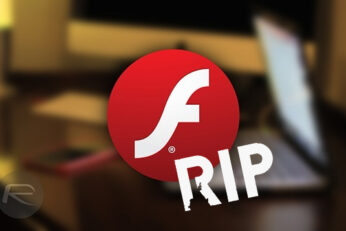7 years after Steve Jobs famously penned an open letter titled 'Thoughts on Flash', Adobe has decided to kill the now-infamous web plugin for good.
Here's how you can disable Adobe Flash Player in Chrome, Firefox, Opera, Safari, Internet Explorer and keep your PC / Mac safe from major vulnerabilities like this latest 0-day. More details and complete guide can be found here.
Flash has been one of the largest building blocks of the internet. Maybe not fundamental, but it’s hard to argue that Flash didn’t play a very vital role in creating and shaping the web as we’re used to it now. From Macromedia to Adobe, and from MiniClip games to catchy animations on websites, Flash technology outlived its days of glory when Steve Jobs declared a war on the platform by not supporting it on iOS – so much so that Adobe, the curators of Flash, finally decided to pull the plug on it, themselves.
The Windows 8 conundrum is perhaps far from over, even if subdued, and whether you love it or hate it (or are completely indifferent, for that matter), it remains a fact that Apple has a really healthy competition in the tablet battlefield for the first time. Windows 8 / RT shows promise in all the right places, and brings an element of ecosystem familiarity that has gained the Cupertino giant its massive numbers quarter over quarter. Things seem to be headed in the right direction, for now.
Adobe's Flash has come under a lot of scrutiny over the past few years, notably from Apple, whose then-CEO Steve Jobs wrote an open letter outlining his reasons for not implementing it on any of his company's iOS devices. Things have gone downhill from there, and with HTML5 becoming more and more widely-utilized, Flash is most certainly being phased out from our devices.
Adobe has confirmed today via their official blog that ongoing support for mobile Flash will discontinue almost immediately, meaning no official support will be given to the recently announced Android 4.1 Jelly Bean OS.
According to a report published earlier today, Adobe will be pulling support for Flash on browsers for mobile devices.
If you own an iOS device, the greatest roadblock to browsing the web you've ever run into has been Apple's insistence not to build in native support for Adobe Flash, citing performance issues that the plugin would cause. While today's development doesn't change Apple's stance, Adobe has developed a new technology that could, 4 years later, finally bring Flash content to all iOS devices, namely; iPhone, iPad and iPod touch.
iOS is loved by many for a whole slew of reasons, but there's one thing many users would like to have on their iOS device: Flash, something which Apple has refused to implement for years. While such a move has contributed to the transition to web standards away from proprietary plugins, many would still love to watch Flash video from within iOS. There's now yet another way to go about it through a a new app known as Skyfire VideoQ. Wondering how it works? Read on.
As any iOS user knows, Mobile Safari is a fast and an efficient browser, but it's not the most feature-packed. 360 Web Browser is a new mobile browser that provides a very functional browsing experience, with features such as Flash transcoding on certain sites for watching Flash video within the browser, and simultaneous downloads.



